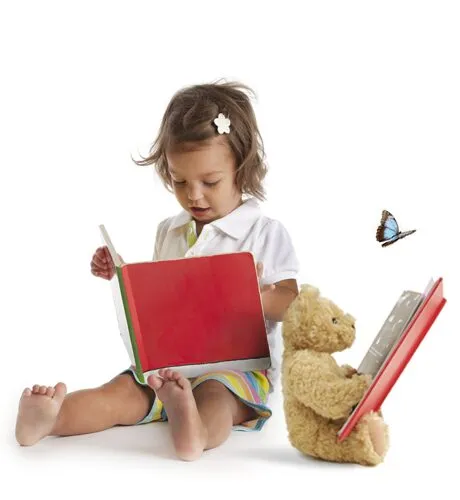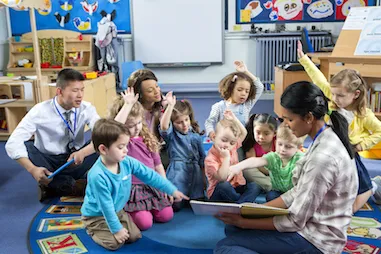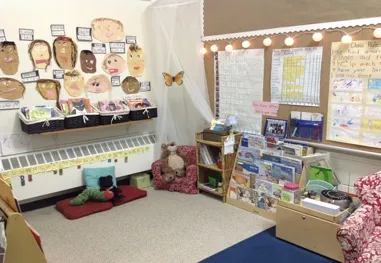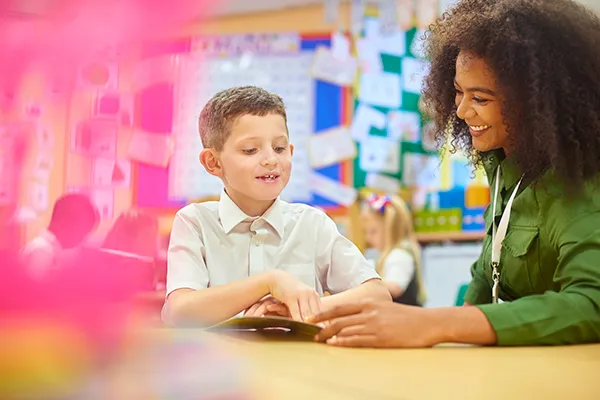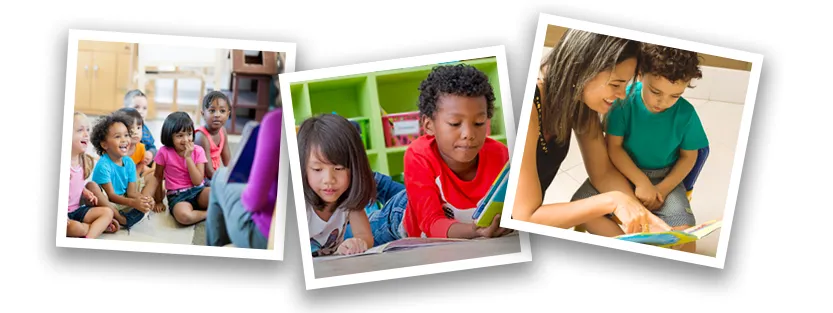
But when teachers plan meaningful ways for children to use language and literacy in ways that provide opportunities for them to get excited about what they are hearing and learning, they will be inspired to become readers and writers. Through exposure to rich and robust classroom libraries, interactive read-aloud experiences, and opportunities to explore a variety of texts, children are motivated to learn to read and later, read to learn.
Together, we can introduce children to the power and pleasure of literacy.
Learn tips, guidance, and strategies for supporting language and literacy development through our new video series.
Teaching Strategies is committed to empowering and inspiring early childhood educators as they encourage a love of literacy in young children. Each of these short videos highlights a different strategy for fostering language and literacy skills in the classroom.
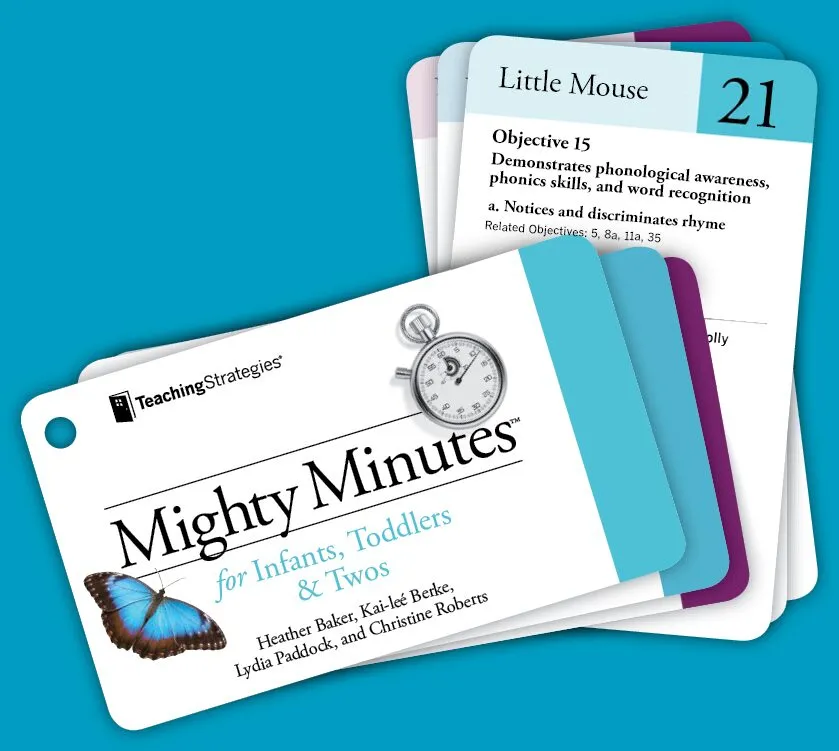
Download FREE Language & Literacy Mighty Minutes!
Turn every minute of the day into a learning opportunity through this engaging collection of interactive songs, rhymes, and games. These brief learning activities can be used anytime, anywhere, to keep children engaged and support language and literacy skills during routines and experiences.
Get your free digital selection of Mighty Minutes today!
What does the research say?
Teaching Strategies’ comprehensive language and literacy solutions are based on extensive research, theory, and best practice on how to support the development of these critical skills with young children:
- Children develop literacy skills and an awareness of language long before they are able to read.
(Burns, M.S., Griffin, P., & Snow, C.) - Children who have never experienced the pleasure of literacy are likely to be unenthusiastic about learning to read and write.
(Snow, Barnes, Chandler, Goodman, & Hemphill) - Reading to children at school or at home leads them to associate reading with pleasure and provides them with models of reading.
(Morrow) - Literacy-enriched play centers increase, often dramatically, the amount of literacy-related activities in which children engage during play.
(Neuman & Roskos, 1990; Vukelich, 1990; Noble & Foster) - Appropriately supportive and inviting classroom literacy settings engage children as readers and motivate them to use prior knowledge, employ cognitive strategies, and interact socially as members of the literate community.
(Baker, Afflerbach, & Reinking)
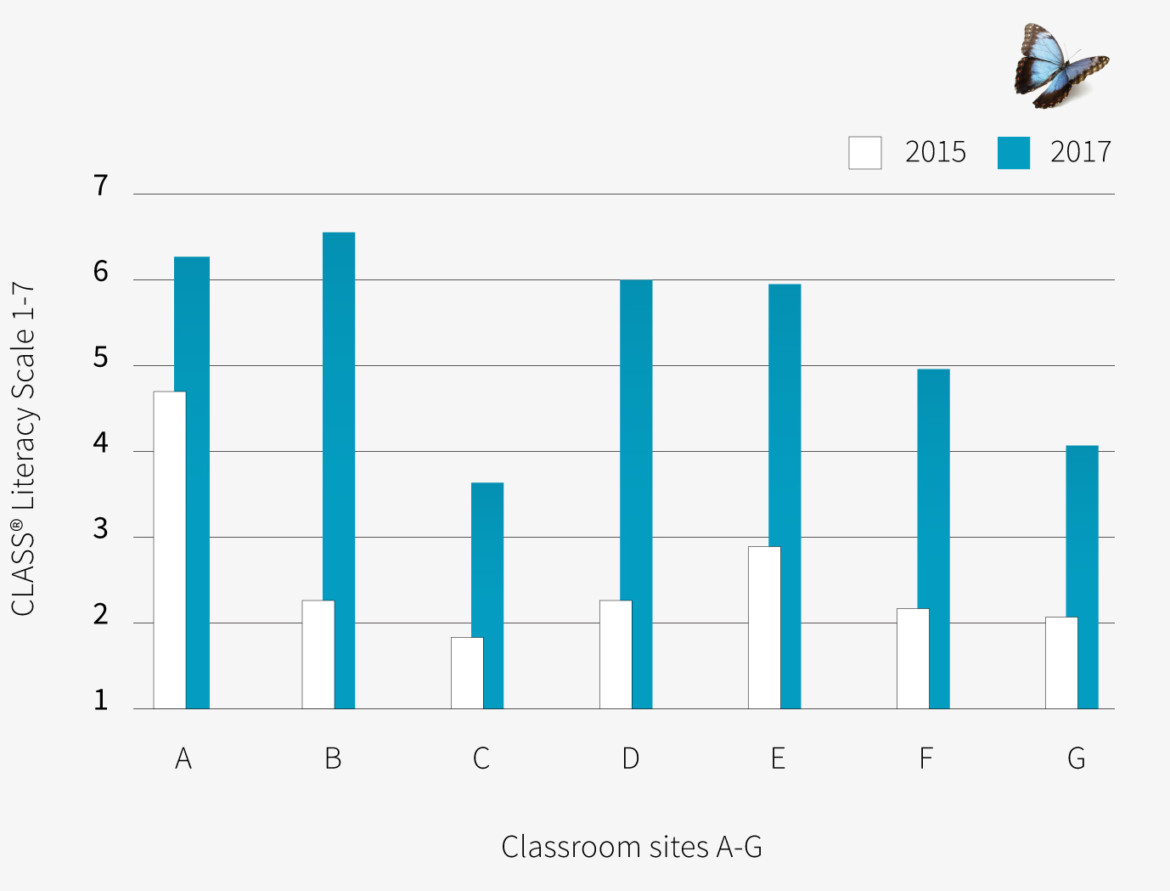
Positive impact of The Creative Curriculum
An independent, two-year impact study found evidence that The Creative Curriculum for Preschool is effective in helping children achieve positive outcomes. Specifically, in just two years, The Creative Curriculum had a greater impact on children’s literacy and math outcomes than other comprehensive curriculum systems. Additionally, teachers who used The Creative Curriculum for two years were able to increase their effectiveness, as evidenced by positive payoffs in terms of increased student learning during the second year.
